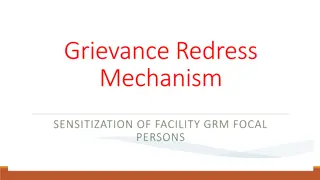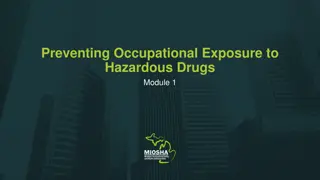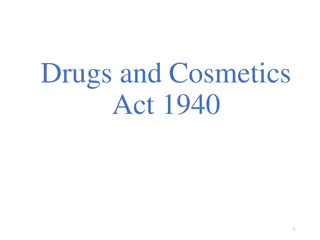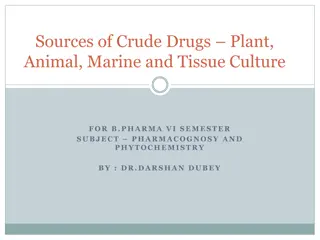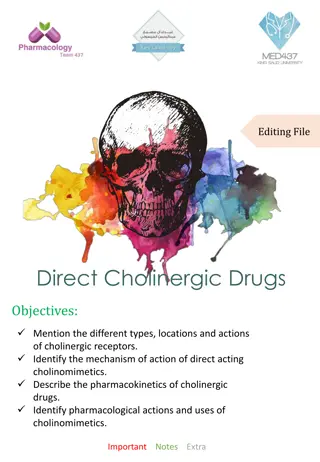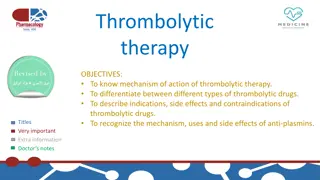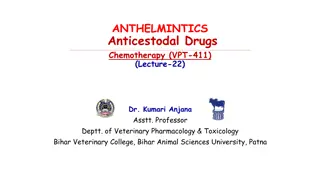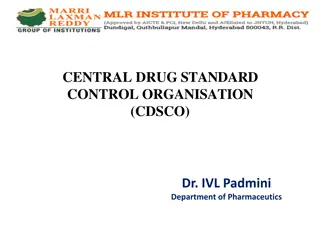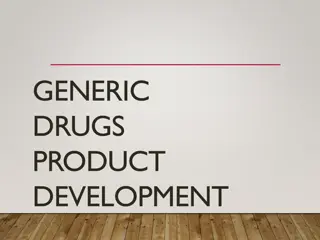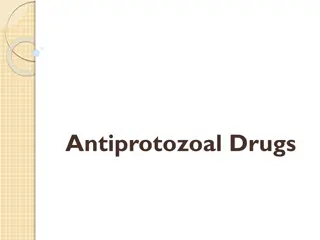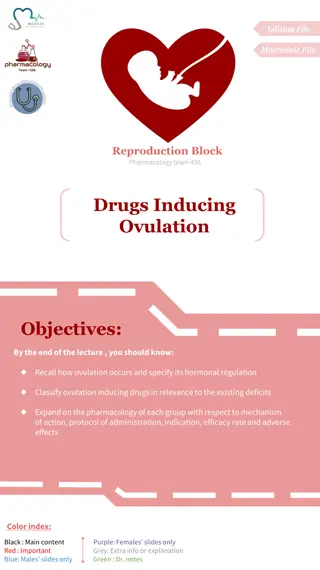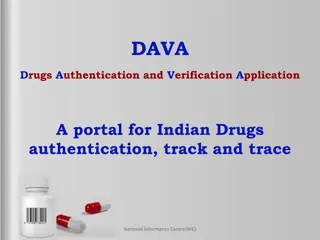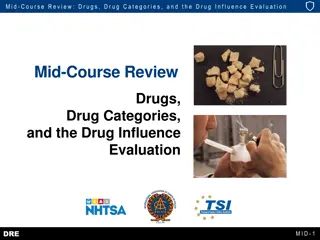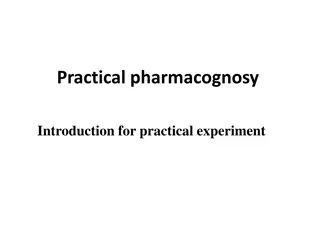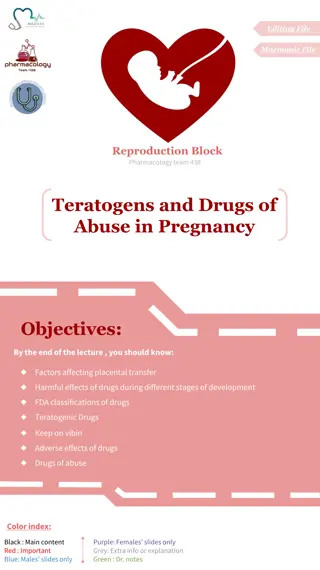
Drug Action: Targets and Mechanisms
Explore the complex interplay of pharmacokinetics and pharmacodynamics in drug action, including how drugs interact with various targets like proteins, regulatory molecules, and ions. Learn about the molecular mechanisms of drug action and different types of drug-target interactions. Dive into examples of drugs acting on structural proteins, regulatory proteins, and carrier molecules, and understand how drugs can modulate channels and receptors to elicit specific responses in the body.
Download Presentation

Please find below an Image/Link to download the presentation.
The content on the website is provided AS IS for your information and personal use only. It may not be sold, licensed, or shared on other websites without obtaining consent from the author. If you encounter any issues during the download, it is possible that the publisher has removed the file from their server.
You are allowed to download the files provided on this website for personal or commercial use, subject to the condition that they are used lawfully. All files are the property of their respective owners.
The content on the website is provided AS IS for your information and personal use only. It may not be sold, licensed, or shared on other websites without obtaining consent from the author.
E N D
Presentation Transcript
PHARMACOKINETICS Absorb Distribute Metabolize Excrete The body Interacts with body s biological molecules TARGETS Of Drug Action To alter their biochemical &/or biophysical activity Depress Activate Replace Irritate Destroy The DRUG RESPONSE PHARMACODYNAMICS
ilos By the end of this lecture you will be able to : Identify different targets of drug action Differentiate between their patterns of action; agonism versus antagonism Elaborate on drug binding to receptors MOLECULAR MECHANISMS OF DRUG ACTION By Prof. Omnia Nayel Assoc. Prof. Osama Yousif
PHARMACODYNAMICS TARGETS > Proteins REGULATORY STRUCTURAL CARRIER MOLECULE ION RECEPTOR ENZYME CHANNEL
TARGETS STRUCTURAL PROTEIN Examples of drugs acting on: Tubulin are Vincristine Colchicine
TARGETS REGULATORY PROTEIN The drug competes with the natural substrate for the enzyme ENZYME Examples of drugs acting: REVERSIBLE REVERSIBLE Neostigmine reversibly compete with ACH for cholinestrase at MEP IRREVERSIBLE IRREVERSIBLE Organophosphates irreversibly competes with ACH for cholinestrase
TARGETS REGULATORY PROTEIN CARRIER MOLECULE The drug binds to such molecules altering their transport ability Examples of drugs acting: On a Passive Transporter Cocaine blocks transport of catecholamines at synaptic cleft in CNS On an Active Transporter Digitalis blocks efflux of Na by Na pump
ION TARGETS REGULATORY PROTEIN CHANNEL Drugs can act as a: *Channel blocker or *Channel modulator Local Anesthetics block Na influx through Na channel in nerve fibers. They are Na channel Blockers. Sulfonylurea drugs block K+out flux via the K channels in pancreatic cells . They are K Channel Modulator
TARGETS RECEPTOR REGULATORY PROTEIN Drugs bind and alter receptor (R) signal transduction machinery. Initiate Activate Bind Occupy L Physiological RESPONSE L LR* R ENDOGENOUS LIGAND AFFINITY EFFICACY Pharmacological RESPONSE R Agonist ACh A A R AR* A drug that possesses both affinity and efficacy Antagonist Tubocurarine NO RESPONSE B B R A drug that possesses an affinity but no efficacy
The tendency of a drug to bind to the receptors is governed by its affinity. AFFINITY The ability for it, once bound, to activate the receptor is denoted by its efficacy. EFFICACY Agonist A drug that possesses both affinity and efficacy Is that inherent property intrinsic to the agonist that determines how "good" an agonist is. high intrinsic efficacy a full agonist low intrinsic efficacy a partial agonist. Antagonist A drug that possesses an affinity but no efficacy
Ligand Agonist High intrinsic efficacy Low intrinsic efficacy Submax response Ligand Max response A Full Agonist A Partial Agonist Has Agonistic-Antagonistic Potentials Pindolol, is a partial agonist, produces less decrease in heart rate than pure antagonists such as propranolol.
Quiz? A) a structural protein B) an ion channel C) an enzyme D) a carrier molecule Vincristine binds to:
Quiz? Local anaesthetics are: A) Reversible enzyme inhibitors B) Irreversible enzyme inhibitors C) Channel blockers D) Channel modulators
Quiz? An agent that can bind and maximally activate the receptor . A) Reversible antagonist B) Full agonist C) Partial agonist D) Irreversible antagonist
Quiz? Tubocurarine is a drug that possesses A) Affinity and efficacy B) Affinity but no efficacy C) No affinity but efficacy D) No affinity and efficacy

